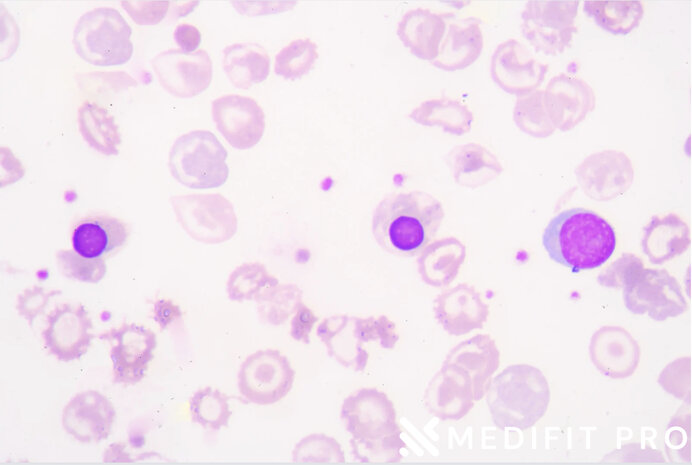Anemia is a medical condition characterized by a decrease in the number of red blood cells or the amount of hemoglobin in the blood, which can result in a reduced ability to carry oxygen to the body’s tissues. This can lead to a range of symptoms, including fatigue, weakness, shortness of breath, and pale skin.
Anemia is a common condition that affects millions of people around the world. According to the World Health Organization (WHO), anemia affects around 1.62 billion people globally, which is roughly 24.8% of the world’s population. In the United States, anemia is estimated to affect around 5-6% of men and 10-12% of women.
Despite its prevalence, many people are unaware of the signs and symptoms of anemia or how it can be prevented and treated. This is why raising awareness about anemia is so important. By educating people about the causes, symptoms, and treatments of anemia, we can help individuals recognize the condition and seek appropriate medical attention. This can improve their quality of life and prevent serious complications from occurring.
II. Causes of Anemia: Understanding the Three Main Culprits
Anemia is a common condition that can affect anyone, regardless of age or gender. It’s caused by a lack of red blood cells or hemoglobin in the blood, which can result in a range of symptoms such as fatigue, weakness, and shortness of breath. While there are many potential causes of anemia, the three primary culprits are blood loss, decreased red blood cell production, and increased red blood cell destruction.
1. Blood Loss: The Silent Saboteur
Blood loss is one of the most common causes of anemia, especially in women. Heavy menstrual bleeding, childbirth, and surgery can all lead to significant blood loss, which can deplete the body’s red blood cell count. Gastrointestinal bleeding, such as from ulcers or colon cancer, is another common cause of blood loss anemia. Sometimes blood loss can occur without any apparent symptoms, making it difficult to detect.
2. Decreased Red Blood Cell Production: The Production Line Problem
The body produces red blood cells in the bone marrow. If the bone marrow isn’t functioning correctly or there is a lack of essential nutrients, the body may not be able to produce enough red blood cells. Iron deficiency anemia is one of the most common types of anemia caused by decreased red blood cell production, and it can result from a lack of iron in the diet, poor iron absorption, or blood loss. Vitamin B12 and folate deficiencies can also lead to decreased red blood cell production, resulting in pernicious anemia or megaloblastic anemia. Aplastic anemia is a rare condition where the bone marrow stops producing enough red blood cells altogether, often due to a genetic condition or exposure to certain toxins or medications.
3. Increased Red Blood Cell Destruction: The Silent Assassin
In some cases, the body may destroy red blood cells faster than it can replace them. This can occur due to genetic conditions like sickle cell anemia and thalassemia, where the body produces abnormal red blood cells that break down more quickly than healthy ones. Autoimmune diseases, such as lupus, can also cause increased red blood cell destruction, where the body’s immune system mistakenly attacks and destroys healthy red blood cells.
III. Symptoms of Anemia: The Silent Struggle
Anemia is a condition that can often go undiagnosed, as its symptoms can be subtle and easily attributed to other causes. However, it’s important to recognize the signs of anemia to get timely treatment and prevent complications. Here are some common symptoms of anemia:
1. Fatigue: The Constant Companion
One of the most common symptoms of anemia is fatigue. This can range from a general feeling of tiredness to a complete lack of energy, making it difficult to perform everyday tasks. Fatigue can impact a person’s work, social life, and overall well-being, making it a significant source of stress.
2. Weakness: The Invisible Handicap
Weakness is another common symptom of anemia. This can make it difficult to perform even simple tasks, such as lifting objects or climbing stairs. Weakness can also impact a person’s balance and coordination, making them more susceptible to falls and injuries.
3. Shortness of Breath: The Oxygen Thief
Anemia can cause shortness of breath, especially during physical activity. This occurs because the body is unable to transport enough oxygen to the muscles and tissues, making them feel tired and strained. Shortness of breath can also occur at rest, making it difficult to get a good night’s sleep.
4. Dizziness: The Unsteady Ground
Anemia can cause dizziness and lightheadedness, especially when standing up or changing positions quickly. This occurs because the body is struggling to maintain blood pressure and oxygen levels, leading to a drop in circulation to the brain.
5. Pale Skin: The Tell-Tale Sign
Pale skin is a common symptom of anemia, especially in the face and nails. This occurs because the body is trying to conserve energy by reducing blood flow to non-essential areas, such as the skin.
Impact of Anemia Symptoms on Daily Life
The symptoms of anemia can have a significant impact on a person’s daily life and overall well-being. Fatigue and weakness can make it difficult to perform routine tasks, impacting work productivity and social life. Shortness of breath and dizziness can cause anxiety and reduce the ability to participate in physical activities. Pale skin can affect a person’s self-esteem and confidence, leading to social isolation and reduced quality of life.
IV. Diagnosis and Treatment of Anemia: Overcoming the Silent
Struggle
Anemia can be a silent struggle, but with timely diagnosis and appropriate treatment, it’s possible to overcome its challenges. Here’s what you need to know about the diagnosis and treatment of anemia.
1. Diagnosing Anemia: The First Step
Anemia is diagnosed through a combination of blood tests and physical exams. A complete blood count (CBC) test is the most common blood test used to diagnose anemia. This test measures the levels of red blood cells, white blood cells, and platelets in the blood. If the red blood cell count is low, it’s an indication of anemia. A physical exam may also be performed to check for other signs of anemia, such as pale skin, rapid heartbeat, and low blood pressure.
2. Treating Anemia: The Road to Recovery
The treatment of anemia depends on the underlying cause and severity of the condition. In some cases, treating the underlying cause may be enough to resolve anemia. For example, if anemia is caused by iron deficiency, taking iron supplements may be enough to restore red blood cell production.
In more severe cases of anemia, additional treatments may be required. Blood transfusions may be necessary to replace lost blood due to injury or surgery. Medications may also be prescribed to stimulate the production of red blood cells. In cases of anemia caused by chronic kidney disease or cancer, medications such as erythropoietin-stimulating agents may be used.
3. Importance of Seeking Medical Attention
If left untreated, anemia can lead to serious complications such as heart problems, developmental delays in children, and an increased risk of infections. It’s important to seek medical attention if you experience symptoms of anemia, such as fatigue, weakness, shortness of breath, dizziness, or pale skin. Your healthcare provider can help you determine the underlying cause of anemia and develop a treatment plan that’s right for you.
V. Prevention of Anemia: Tips for Maintaining Healthy Blood Levels

Maintaining healthy blood levels is crucial to preventing anemia. Here are some tips to help you prevent anemia and maintain healthy blood levels:
1. Eat a Balanced Diet
A diet that’s rich in iron, vitamins, and minerals can help prevent anemia. Foods such as red meat, poultry, fish, beans, lentils, spinach, and fortified cereals are good sources of iron. Vitamin C helps the body absorb iron, so it’s important to include fruits and vegetables like oranges, tomatoes, and broccoli in your diet.
2. Manage Underlying Health Conditions
Certain health conditions, such as chronic kidney disease, cancer, and inflammatory bowel disease, can increase your risk of developing anemia. It’s important to manage these conditions effectively to prevent anemia. Regular check-ups with your healthcare provider can help you stay on top of your health.
3. Avoid Behaviours that Can Lead to Blood Loss
Certain behaviors can increase your risk of blood loss, which can lead to anemia. Smoking can damage blood vessels and increase the risk of bleeding. Excessive alcohol consumption can also damage the liver, which can affect the production of red blood cells. It’s important to avoid these behaviors and adopt healthy habits to maintain healthy blood levels.
4. Take Supplements as Recommended
If you’re at risk of developing anemia, your healthcare provider may recommend supplements to help prevent it. It’s important to follow their recommendations and take supplements as directed to ensure that you’re getting the nutrients you need.
Anemia can be prevented by adopting healthy habits such as eating a balanced diet, managing underlying health conditions, and avoiding behaviors that can lead to blood loss. By taking these steps, you can maintain healthy blood levels and prevent the complications associated with anemia.
Conclusion
In summary , anemia is a common condition that can have serious implications for a person’s health and well-being. It is caused by a lack of red blood cells, which can lead to symptoms such as fatigue, weakness, and shortness of breath. Anemia can be caused by blood loss, decreased red blood cell production, or increased red blood cell destruction.
It is important to raise awareness about anemia to ensure that people understand the symptoms, causes, and treatment options for this condition. By recognizing the signs of anemia, individuals can seek medical attention and receive appropriate treatment to prevent complications.
Prevention of anemia can be achieved through adopting healthy habits such as eating a balanced diet, managing underlying health conditions, and avoiding behaviors that can lead to blood loss.
If you suspect you may have anemia or have any concerns about your health, it is important to seek medical attention. By taking steps to prevent and manage anemia, you can maintain healthy blood levels and improve your overall health and well-being.
Previous article: ADHD Attention Deficit Hyperactivity Disorder
- World Health Organization: https://www.who.int/health-topics/anaemia#tab=tab_1


























Recent Comments